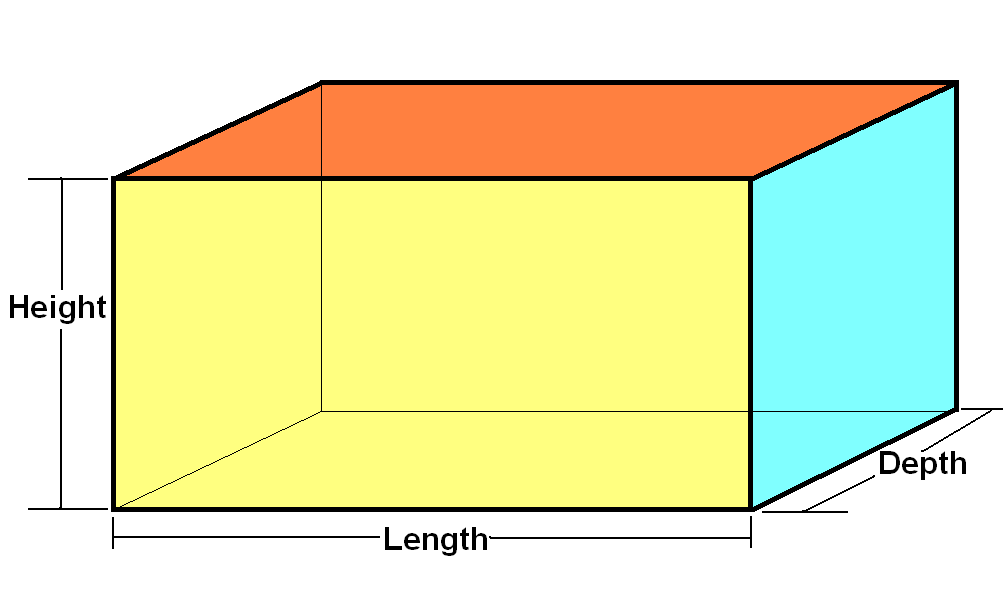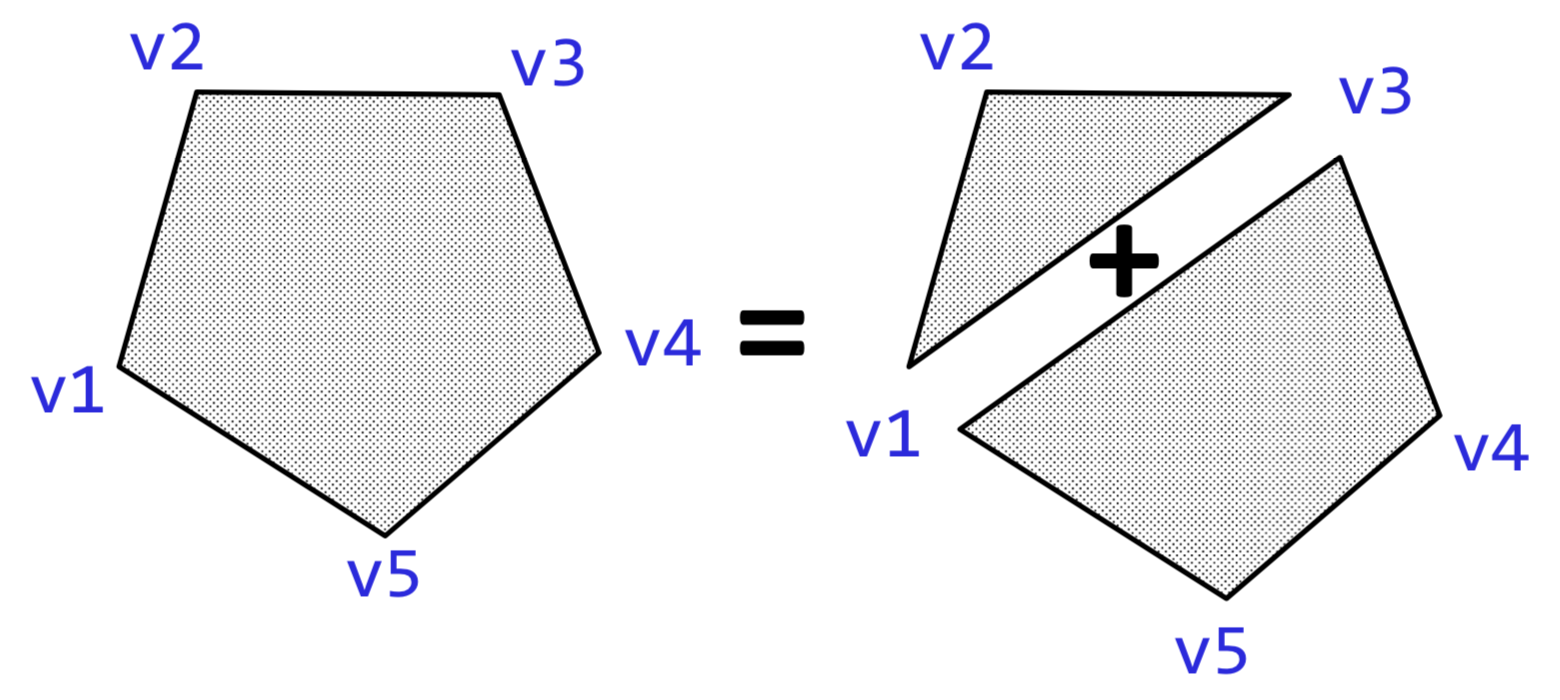Recap: Haskell Crash Course II

- Core program element is an expression
- Every valid expression has a type (determined at compile-time)
- Every valid expression reduces to a value (computed at run-time)
Recap: Haskell
Basic values & operators
Int,Bool,Char,Double+,-,==,/=
Execution / Function Calls
- Just substitute equals by equals
Producing Collections
- Pack data into tuples & lists
Consuming Collections
- Unpack data via pattern-matching
Next: Creating and Using New Data Types
typeSynonyms: Naming existing typesdatatypes: Creating new types
Type Synonyms
Synonyms are just names (“aliases”) for existing types
- think
typedefinC
A type to represent Circle
A tuple (x, y, r) is a circle with center at (x, y) and radius r
type Circle = (Double, Double, Double)
A type to represent Cuboid
A tuple (length, depth, height) is a cuboid
type Cuboid = (Double, Double, Double)
Using Type Synonyms
We can now use synonyms by creating values of the given types
circ0 :: Circle
circ0 = (0, 0, 100) -- ^ circle at "origin" with radius 100
cub0 :: Cuboid
cub0 = (10, 20, 30) -- ^ cuboid with length=10, depth=20, height=30 And we can write functions over synonyms too
area :: Circle -> Double
area (x, y, r) = pi * r * r
volume :: Cuboid -> Double
volume (l, d, h) = l * d * h We should get this behavior
>>> area circ0
31415.926535897932
>>> volume cub0
6000
QUIZ
Suppose we have the definitions
type Circle = (Double, Double, Double)
type Cuboid = (Double, Double, Double)
circ0 :: Circle
circ0 = (0, 0, 100) -- ^ circle at "origin" with radius 100
cub0 :: Cuboid
cub0 = (10, 20, 30) -- ^ cuboid with length=10, depth=20, height=30
area :: Circle -> Double
area (x, y, r) = pi * r * r
volume :: Cuboid -> Double
volume (l, d, h) = l * d * hWhat is the result of
>>> volume circ0A. 0
B. Type error
Beware!
Type Synonyms
Do not create new types
Just name existing types
And hence, synonyms
- Do not prevent confusing different values
Creating New Data Types
We can avoid mixing up by creating new data types
-- | A new type `CircleT` with constructor `MkCircle`
data CircleT = MkCircle Double Double Double
-- | A new type `CuboidT` with constructor `MkCuboid`
data CuboidT = MkCuboid Double Double DoubleConstructors are the only way to create values
MkCirclecreatesCircleTMkCuboidcreatesCuboidT
QUIZ
Suppose we create a new type with a data definition
-- | A new type `CircleT` with constructor `MkCircle`
data CircleT = MkCircle Double Double Double What is the type of the MkCircle constructor?
A. MkCircle :: CircleT
B. MkCircle :: Double -> CircleT
C. MkCircle :: Double -> Double -> CircleT
D. MkCircle :: Double -> Double -> Double -> CircleT
E. MkCircle :: (Double, Double, Double) -> CircleT
Constructing Data
Constructors let us build values of the new type
circ1 :: CircleT
circ1 = MkCircle 0 0 100 -- ^ circle at "origin" w/ radius 100
cub1 :: Cuboid
cub1 = MkCuboid 10 20 30 -- ^ cuboid w/ len=10, dep=20, ht=30
QUIZ
Suppose we have the definitions
data CuboidT = MkCuboid Double Double Double
type Cuboid = (Double, Double, Double)
volume :: Cuboid -> Double
volume (l, d, h) = l * d * hWhat is the result of
>>> volume (MkCuboid 10 20 30)A. 6000
B. Type error
Deconstructing Data
Constructors let us build values of new type … but how to use those values?
How can we implement a function
volume :: Cuboid -> Double
volume c = ???such that
>>> volume (MkCuboid 10 20 30)
6000
Deconstructing Data by Pattern Matching
Haskell lets us deconstruct data via pattern-matching
volume :: Cuboid -> Double
volume c = case c of
MkCuboid l d h -> l * d * hcase e of Ctor x y z -> e1 is read as as
IF - e evaluates to a value that matches the pattern Ctor vx vy vz
THEN - evaluate e1 after naming x := vx, y := vy, z := vz
Pattern matching on Function Inputs
Very common to do matching on function inputs
volume :: Cuboid -> Double
volume c = case c of
MkCuboid l d h -> l * d * h
area :: Circle -> Double
area a = case a of
MkCircle x y r -> pi * r * rSo Haskell allows a nicer syntax: patterns in the arguments
volume :: Cuboid -> Double
volume (MkCuboid l d h) = l * d * h
area :: Circle -> Double
area (MkCircle x y r) = pi * r * rNice syntax plus the compiler saves us from mixing up values!
But … what if we need to mix up values?
Suppose I need to represent a list of shapes
- Some
Circles - Some
Cuboids
What is the problem with shapes as defined below?
shapes = [circ1, cub1]Where we have defined
circ1 :: CircleT
circ1 = MkCircle 0 0 100 -- ^ circle at "origin" with radius 100
cub1 :: Cuboid
cub1 = MkCuboid 10 20 30 -- ^ cuboid with length=10, depth=20, height=30
Problem: All list elements must have the same type
Solution???
QUIZ: Variant (aka Union) Types
Lets create a single type that can represent both kinds of shapes!
data Shape
= MkCircle Double Double Double -- ^ Circle at x, y with radius r
| MkCuboid Double Double Double -- ^ Cuboid with length, depth, heightWhat is the type of MkCircle 0 0 100 ?
A. Shape
B. Circle
C. (Double, Double, Double)
Each Data Constructor of Shape has a different type
When we define a data type like the below
data Shape
= MkCircle Double Double Double -- ^ Circle at x, y with radius r
| MkCuboid Double Double Double -- ^ Cuboid with length, depth, heightWe get multiple constructors for Shape
MkCircle :: Double -> Double -> Double -> Shape
MkCuboid :: Double -> Double -> Double -> ShapeNow we can create collections of Shape
Now we can define
circ2 :: Shape
circ2 = MkCircle 0 0 100 -- ^ circle at "origin" with radius 100
cub2 :: Shape
cub2 = MkCuboid 10 20 30 -- ^ cuboid with length=10, depth=20, height=30 and then define collections of Shapes
shapes :: [Shape]
shapes = [circ1, cub1]
EXERCISE
Lets define a type for 2D shapes
data Shape2D
= MkRect Double Double -- ^ 'MkRect w h' is a rectangle with width 'w', height 'h'
| MkCirc Double -- ^ 'MkCirc r' is a circle with radius 'r'
| MkPoly [Vertex] -- ^ 'MkPoly [v1,...,vn]' is a polygon with vertices at 'v1...vn'
type Vertex = (Double, Double)Write a function to compute the area of a Shape2D
area2D :: Shape2D -> Double
area2D s = ???HINT

You may want to use this helper that computes the area of a triangle at v1, v2, v3
areaTriangle :: Vertex -> Vertex -> Vertex -> Double
areaTriangle v1 v2 v3 = sqrt (s * (s - s1) * (s - s2) * (s - s3))
where
s = (s1 + s2 + s3) / 2
s1 = distance v1 v2
s2 = distance v2 v3
s3 = distance v3 v1
distance :: Vertex -> Vertex -> Double
distance (x1, y1) (x2, y2) = sqrt ((x2 - x1) ** 2 + (y2 - y1) ** 2)